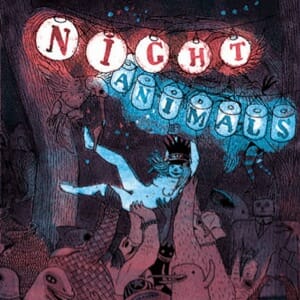Comic Book & Graphic Novel Round-Up (3/11/11)

Each week, Paste looks at some of the most intriguing comic books, graphic novels, graphic memoirs and other illustrated books….

Night Animals – by Brecht Evens
Top Shelf Productions
Rating: 8.4
Belgian cartoonist Brecht Evens jams his latest offering with a kaleidoscope of lurid detail and beauty. The 24-year-old savant knows his strength well—there’s not a single word balloon to obscure the frenzy of creepy crawlies in every crevice of the gorgeous Night Animals. His style immediately draws comparisons to Shel Silverstein, Maurice Sendak and even Ralph Steadman. Upon closer look, it’s apparent that Robert Crumb is the hidden muse behind these imaginative adult fables. There’s a subversive honesty (immaturity?) to the sexuality displayed throughout these gorgeous spreads. For example, the first tale follows a grown man in a bunny costume (hint #1) as he chases an arrowed path through a labyrinth of fanged beasts and rustic water colors. He eventually reaches his destination—a rabbit-eared beauty who bares Crumb’s trademark curves. But the arrowed path doesn’t stop at its initial target; it points further down into her …er, own personal labyrinth. The second vignette’s metaphysical underpinnings are more ambiguous, featuring a girl who’s lulled away by a motley crew of wild things after she experiences her first period. This combo of Freudian intrigue and picture-book whimsy makes it difficult to discern who exactly this book is for. That said, this is by far the best collection of naked parading monsters in the history of print. (SE)

Freeway – by Mark Kalesniko
Fantagraphics
Rating: 6.1
-

-

-

-

-

-

-

-

-

-

-

-

-

-

-

-

-

-

-

-

-

-

-

-

-

-

-

-

-

-

-

-

-

-

-

-

-

-

-

-










































